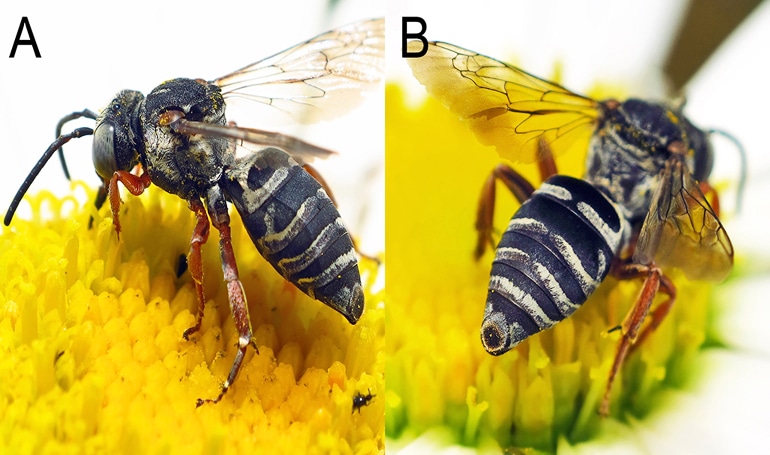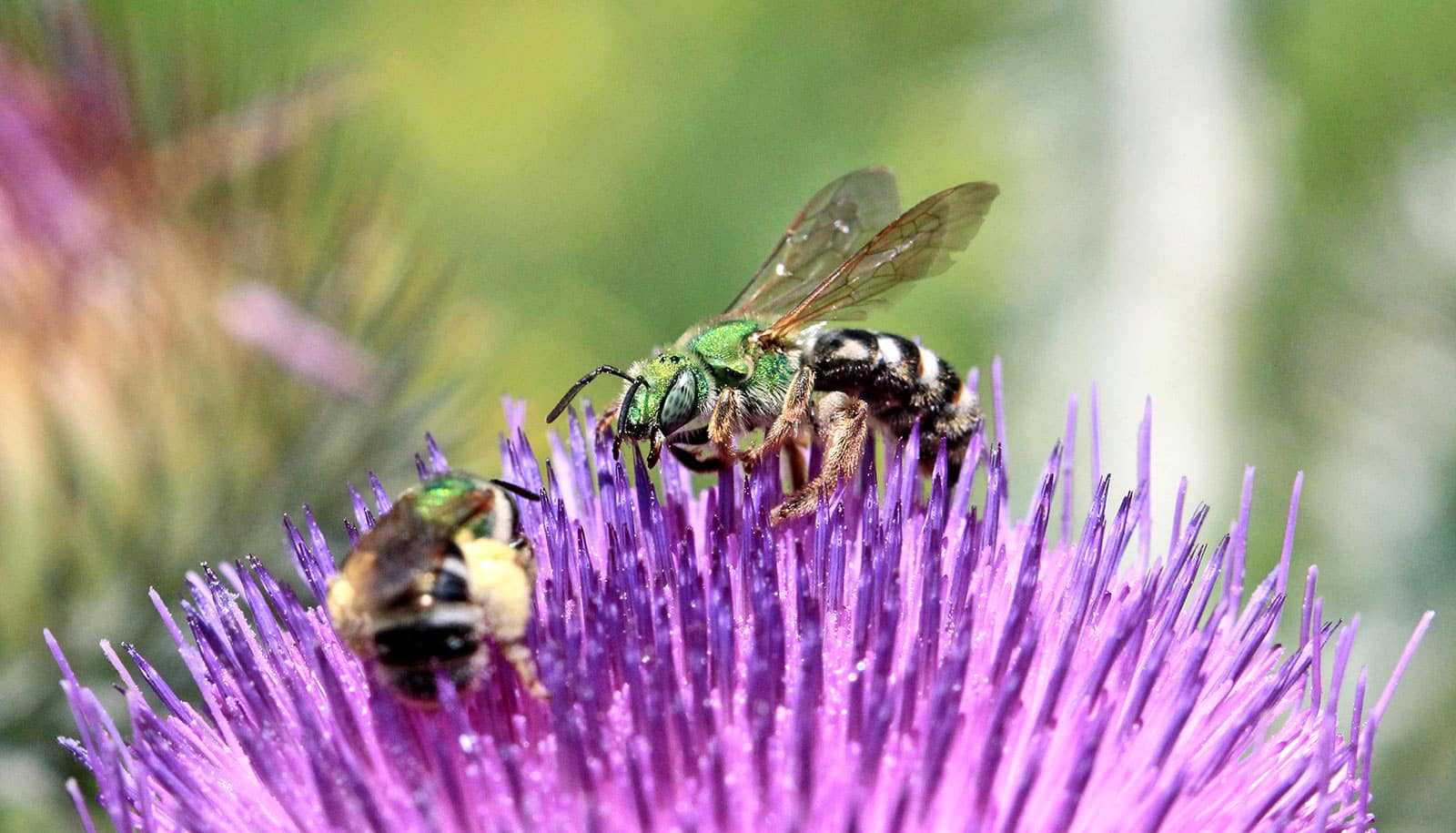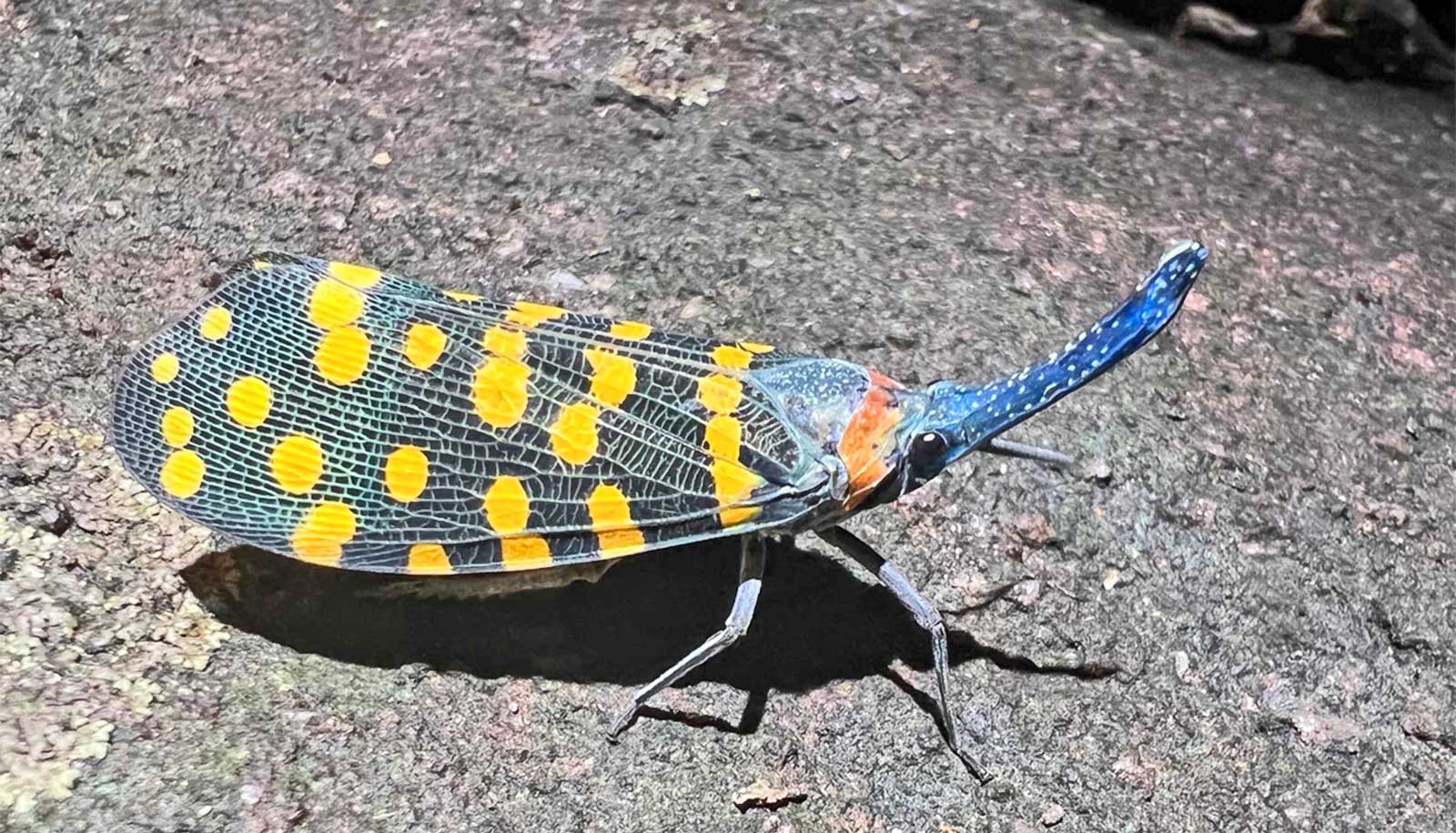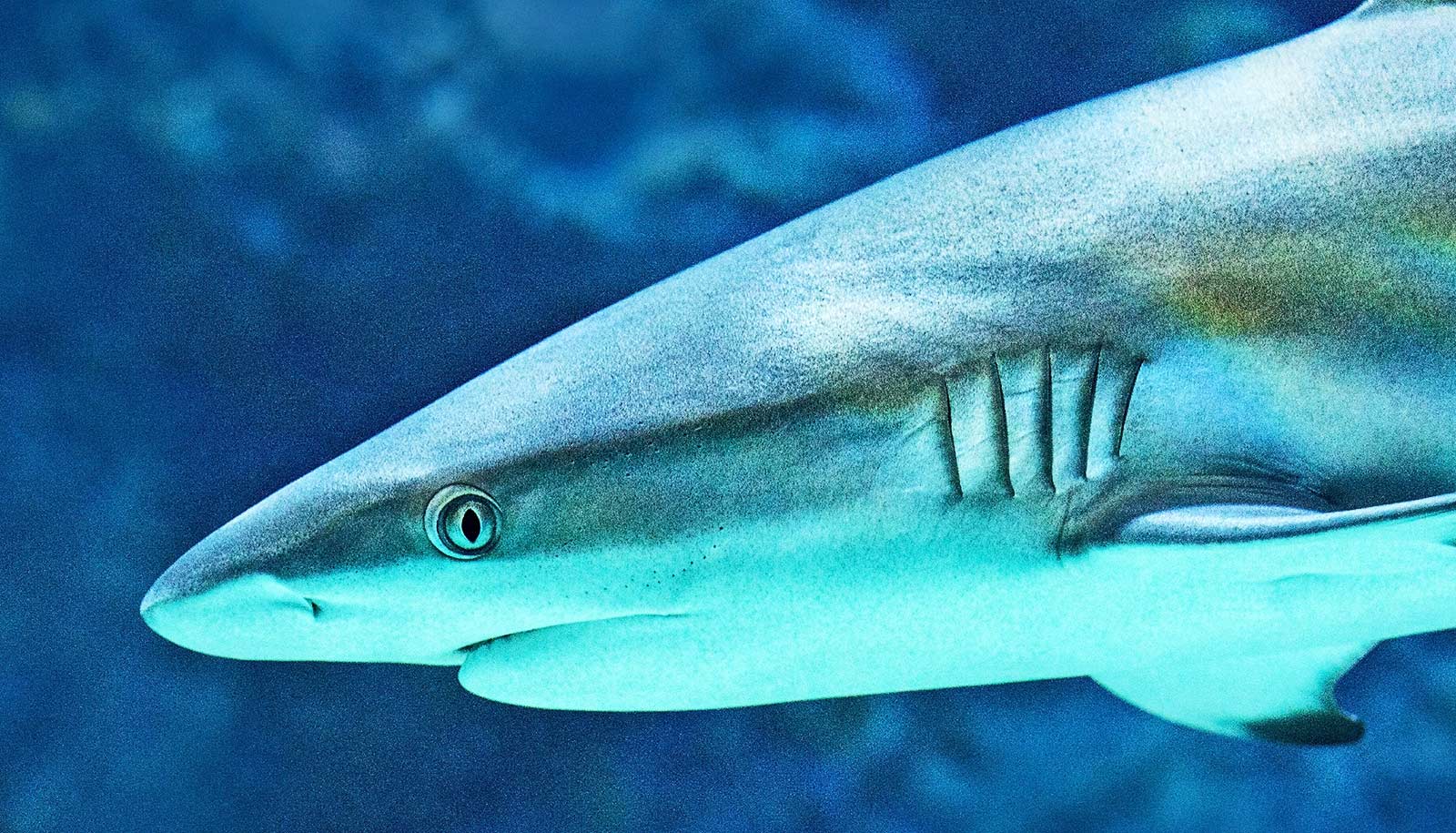The first complete bee census has confirmed a new species and revealed that the actual number of bee species in Michigan exceeded earlier estimates.
Identifying potential pollinators, including the 38 new bees recorded in the state, is crucial, especially in the face of declining honey bee populations. All pollinators make an estimated $14 billion annual contribution to US agriculture, so it’s imperative to understand wild bee populations and their benefits to crops and the environment.
“Pollinator conservation is not possible without a good understanding of what bees we have and where they are found,” says Jason Gibbs, a former research associate at Michigan State University now at the University of Manitoba. “We need better and more thorough sampling of our wild bee communities and an increased emphasis on understanding their basic taxonomy and natural history.”

The monograph appears in a recent issue of the journal Zootaxa and shows that the Great Lakes State hosts 465 species of bees—the highest number of species reported by surrounding states. Along with providing a more accurate count, this deep-dive into wild bees provides summaries of their taxonomy and behavior as well as a preliminary conservation assessment.
“It was illuminating to learn of the high number of species; one reason that our count could be higher than other nearby states, however, could be attributed to our overall efforts to document bee diversity,” says coauthor Rufus Isaacs, an entomologist at Michigan State. “Regardless, this will be an indispensable reference that will help guide current and future research on our region’s wild bees, which is a focus for a group of us at Michigan State University.”
Previous estimates suggested around 420 species in the state. Gibbs, who led a holistic, intensive effort, confirms that past estimates were a tad low.
Bioblitz: finding and identifying as many species as possible in a specific area in a short amount of time.
The team scoured more than 100 years of bee records, including private and university collections at Michigan State, the University of Michigan, and the American Museum of Natural History. Gibbs reviewed bees collected on Isle Royale, gathered pollinators at Michigan State’s KBS Bird Sanctuary and even “bioblitzed” the Sleeping Bear sand dunes. (A bioblitz focuses on finding and identifying as many species as possible in a specific area in a short amount of time.)
Scientists collected on their lunch hours, while pedaling along the Lansing River Trail and perusing flower gardens on campus.
The team’s work led to the confirmation of the new species in Grand Rapids. They describe the new bee species, Triepeolus eliseae, in the journal with a full taxonomic description and photographs of the distinguishing features.
This new species does not collect pollen or live in colonies. It is a cuckoo, sneaking into the nests of more-industrious bees to lay its eggs. The larva that hatches grows enormous mandibles to dispense with its competition for the host-provided food stores.
Coauthor Molly Rightmyer named it after her daughter Elise. This parasitic bee’s presence in Michigan had been known since the early 1940s. However, only now—more than 70 years later—has the taxonomy of this species been identified and resolved.
Tiny clingfish in a jar is a brand new species
Balancing the joy of the new discovery is the fact that a number of bees once found in Michigan are now absent. One example is the rusty patched bumble bee, which has not been seen here since 2000. This is now listed as an endangered species, even though there are active populations in some nearby states.
The researchers hope more citizen scientists will increase their bee awareness and help document new finds.
To assist identification efforts, Michigan State has published “Bees of the Great Lakes Region and Wildflowers to Support Them.” Citizens can also log their finds at Bugguide.net and iNaturalist. Citizen science submissions to these sites were part of Michigan’s improved bee count.
John Ascher of the National University of Singapore also contributed to this study as part of his effort to document the entire world’s bee fauna. His exhaustive list is available through DiscoverLife.org.
The USDA-National Institute of Food and Agriculture supported the work through the Integrated Crop Pollination Project.
Source: Michigan State University



